THE PLUS RHINOPLASTY IN KOREA
Non-Implant Rhinoplasty in Korea


THE PLUS RHINOPLASTY IN KOREA
Non-Implant Rhinoplasty in Korea
the plus rhinoplasty in Korea
Non-Implant Rhinoplasty Surgery
What is Non-Implant Rhinoplasty?
Non-implant rhinoplasty is a surgical method that naturally raises the bridge of the nose without using artificial implants. Instead, it uses autologous (one’s own) tissue or performs surgery only on the tip of the nose. This procedure has a lower risk of inflammation or side effects compared to artificial implants, and allows for a more natural nose reshaping as it uses the patient’s own tissue.
- Natural Look and Feel: Using one’s own cartilage provides a more natural appearance and touch compared to synthetic implants.
- Lower Risk: Reduced risk of rejection and infection.
- Durability: Autologous cartilage is less likely to shift or cause complications over time.
- Customization: Allows for more tailored and precise reshaping of the nose.
Sources of Autologous Cartilage:
- Septal Cartilage: Taken from the nasal septum, this is often the first choice because it is readily available during the operation and provides a good texture and consistency for nasal reconstruction.
- Ear Cartilage (Conchal Cartilage): Harvested from the ear’s concha (the curved part near the ear canal), this cartilage is useful for smaller grafts and areas needing more flexibility.
- Rib Cartilage: Taken from the patient’s rib, this type of cartilage is typically used when a larger or more sturdy graft is required. This is often the case in more complex reconstructions or revision surgeries.
During the cartilage grafting phase, the harvested cartilage is meticulously reshaped and sculpted to achieve the desired nasal contours. This tailored cartilage is then carefully placed within the nose to enhance its overall structure. The grafts can be used to augment various nasal areas, such as the bridge, tip, or any part requiring additional definition and support.
Other Tissue:
- Dermal Fat: Harvested from areas like the lower abdomen or buttocks, is an effective material for nasal augmentation, particularly in supplementing the bridge of the nose. Its ease of collection and minimal scarring at the donor site make it a favorable choice. Additionally, dermal fat has some level of resistance to infection and inflammation, contributing to its durability and biocompatibility. This material is especially beneficial in reoperations where the nasal skin may already be compromised. The before and after surgery effects typically show a significant improvement in nasal contour and skin quality, offering a natural and aesthetically pleasing outcome.
- Fascia: A fibrous connective tissue, is a valuable material for patients with thin nasal skin where traditional implants might be visible or cause discoloration with minor stimuli. Fascia serves to fortify the delicate skin of the nasal bridge or tip, adding necessary support and subtle augmentation. However, fascia alone cannot substantially increase nasal height. Therefore, it is often used in a folded manner or wrapped around cartilage harvested from the chest to provide additional bulk and solidity. The results before and after surgery using fascia usually demonstrate a strengthened nasal structure with a natural enhancement in appearance, particularly in cases requiring delicate and understated correction.
When is Non-Implant Rhinoplasty Needed?
Non-implant rhinoplasty is recommended in the following cases:
① When there is a rejection of artificial implants.
② When reoperation is desired due to inflammation and collapse.
③ When a natural nose line is desired.
Before and After Pictures of Non-Implant Rhinoplasty
Case A: Chest Cartilage
Chest cartilage provides sturdy support and sufficient quantity. It is mainly used when strong support is needed. It can be used as a whole like an implant, or it can be used by overlapping several sections or finely trimming it.
Before and after using chest cartilage:
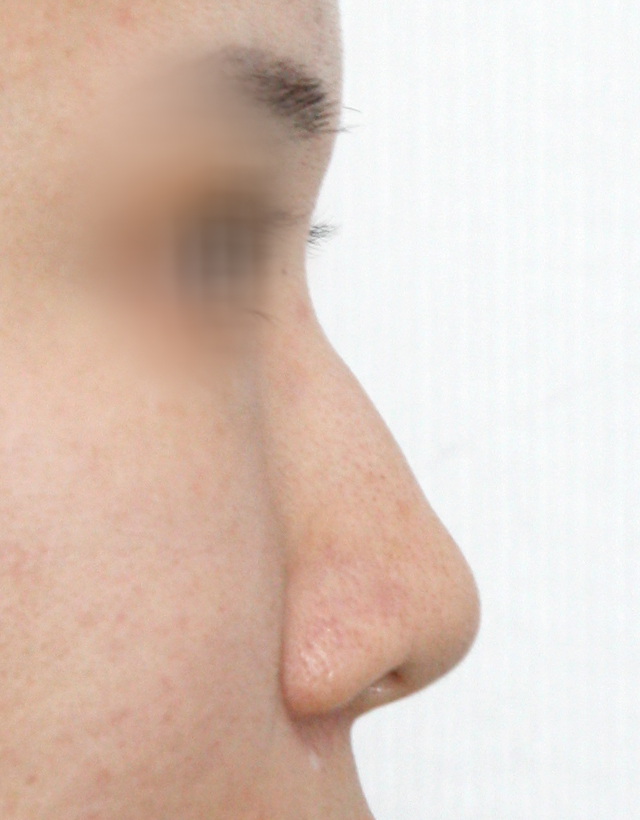
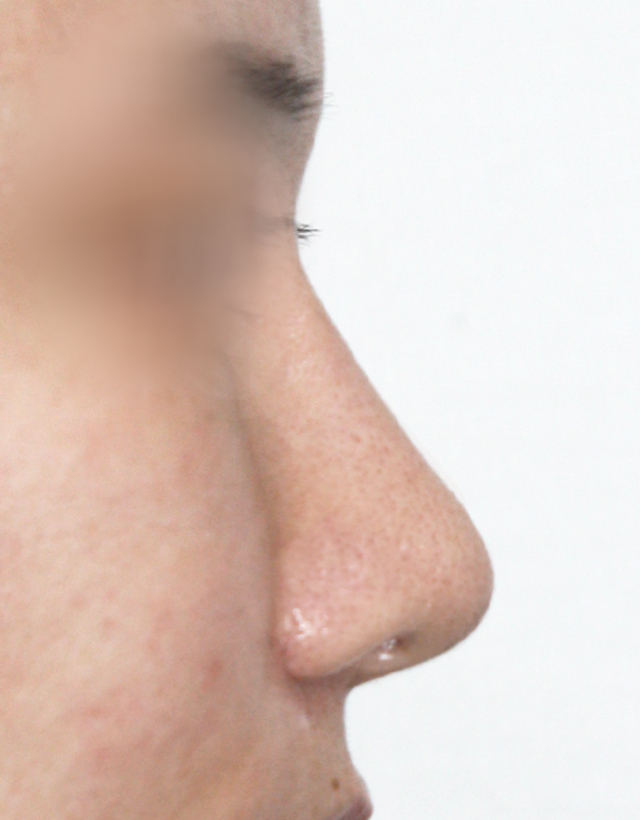
Case B: Dermal Fat
Dermal fat is easy to collect and scars at the collection site are not a big problem. It has some resistance to infection and inflammation, and is an effective material for supplementing the bridge of the nose. It is often used in reoperations where there are problems with the skin of the nose.
Before and after surgery using dermal fat:
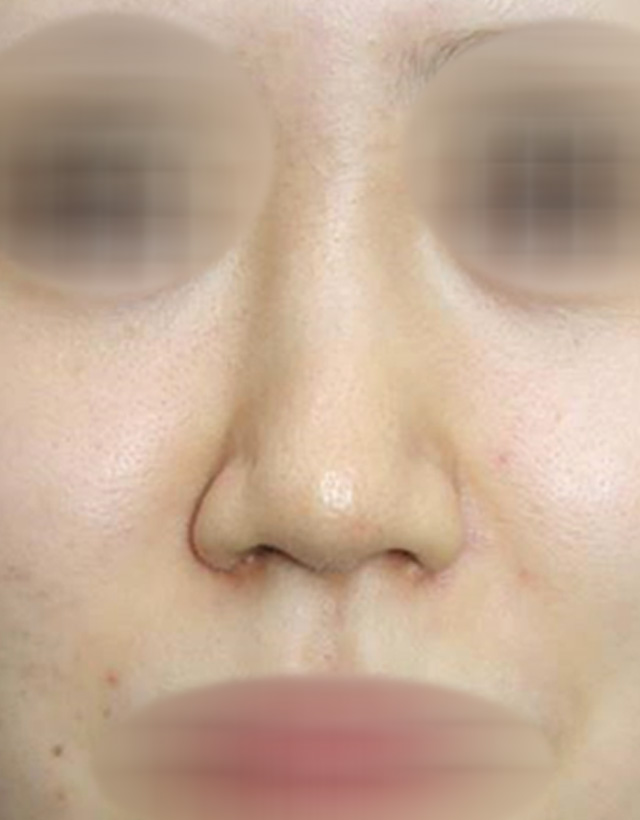
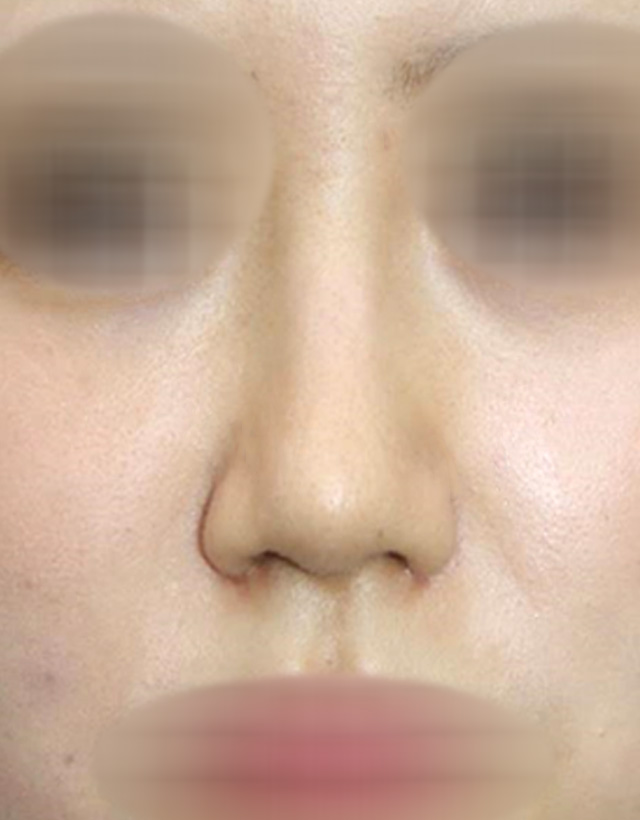
Case C: Fascia
Fascia is used in patients with thin skin, where the implant is visible, or where the skin color changes easily with small stimuli. It strengthens the thin skin of the bridge or tip of the nose. When used alone, it cannot significantly increase the height, so it is used folded or wrapped around the chest cartilage.
Before and after surgery using fascia:
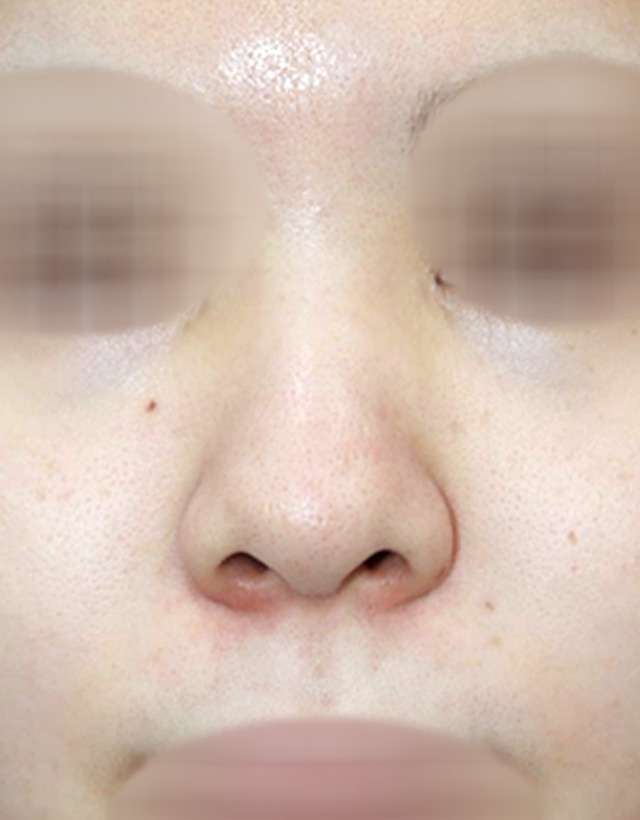
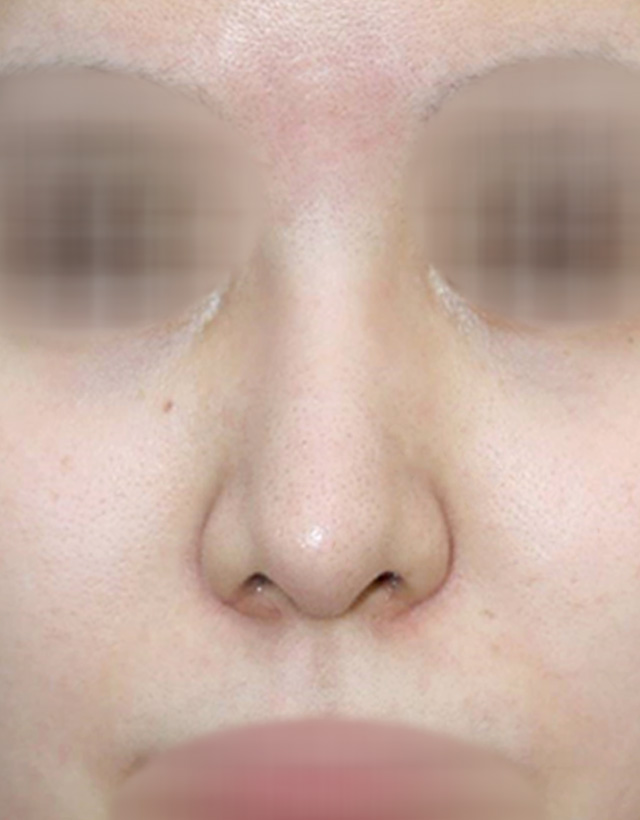
See more before and after surgery photos.
View the research papers from The Plus Plastic Surgery medical team.
Frequently Asked Questions
What are the benefits of choosing non-implant rhinoplasty in Korea at THE PLUS PS?
Non-implant rhinoplasty in Korea at THE PLUS PS offers a natural nose reshaping using autologous tissue, reducing the risk of inflammation and side effects associated with artificial implants. This method is ideal for patients seeking a more natural appearance and those who have experienced adverse reactions to implants.
What types of autologous tissue are used in the non-implant rhinoplasty procedure?
The procedure at THE PLUS PS in Gangnam typically uses autologous cartilage, dermal fat, or fascia. Each type provides specific benefits: cartilage offers strong support, dermal fat works well in reoperations, and fascia is suitable for patients with thin skin. The choice of tissue depends on individual needs, such as the desired nose structure and the skin’s characteristics.
Who is an ideal candidate for non-implant rhinoplasty at THE PLUS PS?
Ideal candidates for non-implant rhinoplasty at THE PLUS PS are individuals who have experienced rejection of artificial implants, desire reoperation due to previous complications, or aim for a more natural nasal contour. Those with thin skin or seeking to avoid visible implant outlines may also benefit from this procedure.
